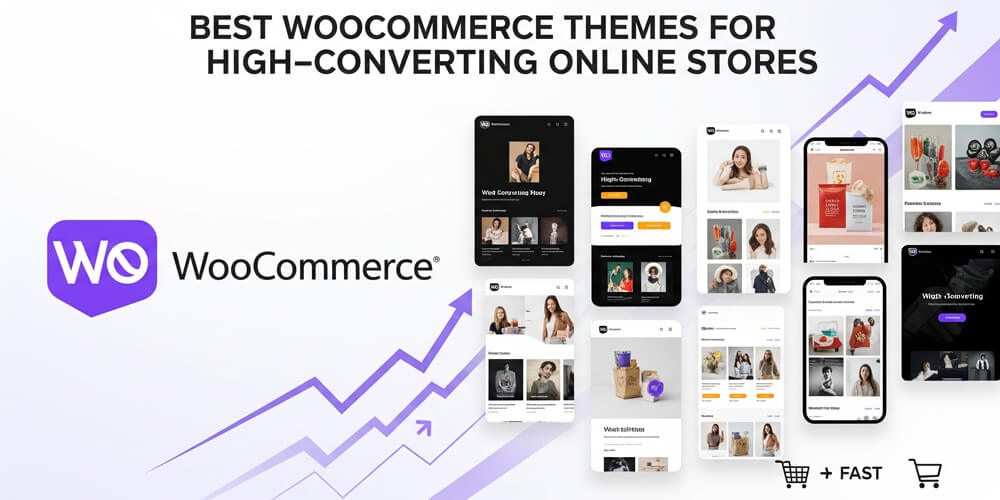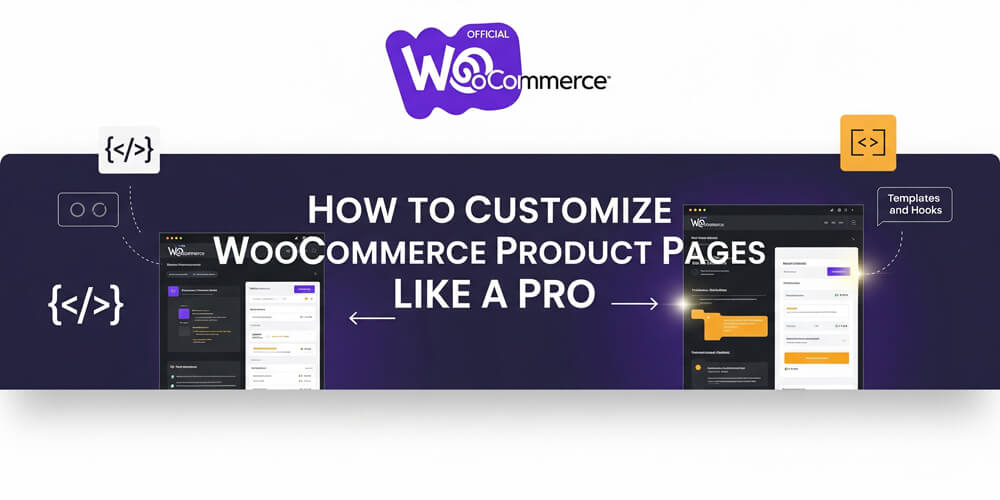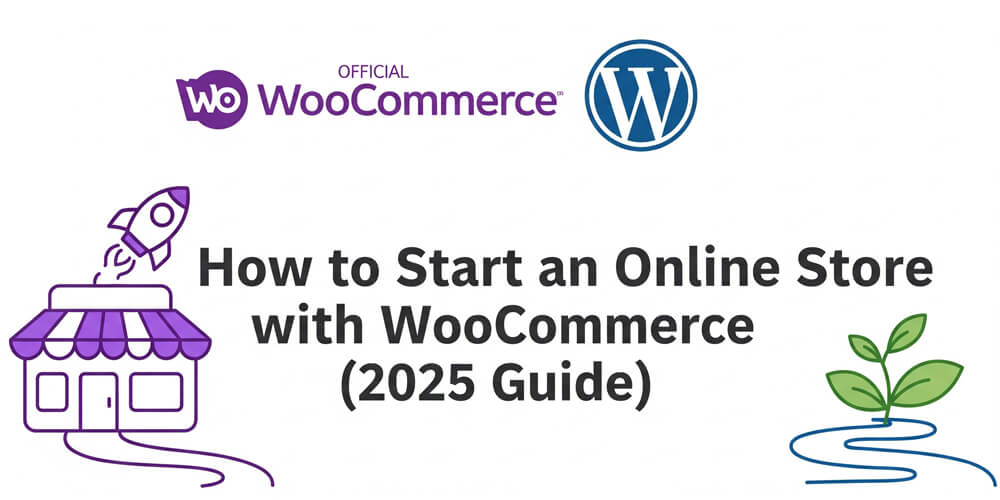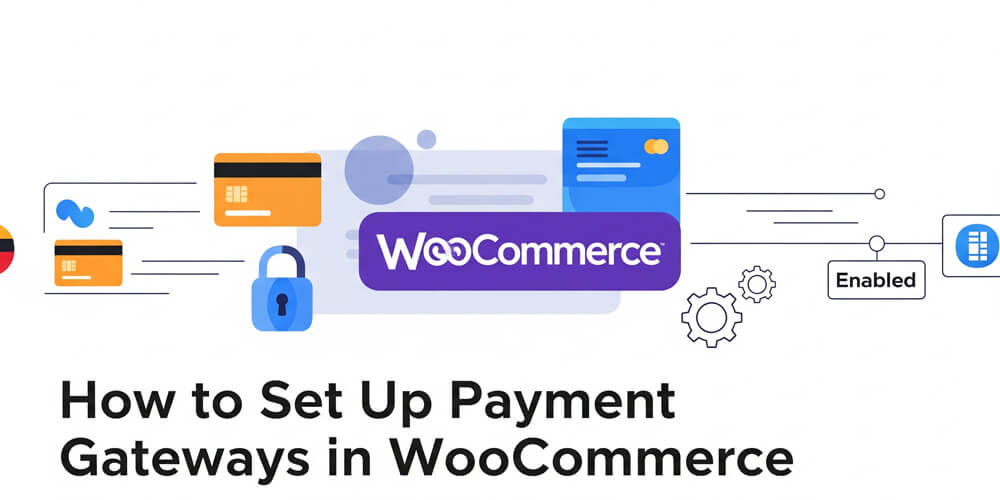In the fast-paced world of eCommerce, your online store’s design isn’t just a pretty face—it’s the backbone of your business. A well-chosen WooCommerce theme can turn casual browsers into loyal buyers, while a poorly designed one can send them running to your competitors. If you’re using WooCommerce, the go-to eCommerce plugin for WordPress, you’ve already got a solid foundation. But to truly make your store shine, you need a theme that’s fast, modern, mobile-friendly, and built to convert.
I’ve been working with WordPress and WooCommerce for years, helping store owners like you find the perfect setup. In this guide, I’ll walk you through everything you need to know about choosing the best WooCommerce themes for high-converting online stores. We’ll cover what they are, why they matter, and how to pick and implement one step-by-step. Plus, I’ll share real-world examples, a handy pros-and-cons table, and some SEO tricks I’ve learned along the way. Whether you’re a blogger, developer, or marketer, you’ll find practical tips to level up your store. Let’s dive in!
Table of Contents
Open Table of Contents
WooCommerce Themes: The Backbone of Your Store
Imagine stepping into a physical store that’s bright, inviting, and easy to navigate—products are neatly displayed, checkout is a breeze, and you instantly feel confident about making a purchase. That’s the experience your WooCommerce theme should deliver online. Your theme isn’t just a backdrop; it’s the foundation of your customer’s journey. A thoughtfully designed theme builds trust, guides shoppers smoothly from browsing to buying, and showcases your products in the best light. On the flip side, a cluttered or outdated theme can frustrate visitors, slow down your site, and drive potential customers away. In today’s competitive eCommerce landscape, your theme is a powerful tool for boosting conversions, enhancing SEO, and reinforcing your brand identity. Investing in the right WooCommerce theme is one of the smartest moves you can make to grow your online store and keep customers coming back.
A high-converting theme does more than look good. It loads fast, works flawlessly on phones, and guides shoppers effortlessly from browsing to buying. In this post, I’ll break down the best WooCommerce themes for 2025 and show you how to choose one that fits your store like a glove. By the end, you’ll have a clear plan to boost your conversions and make your store a standout success.
What Are WooCommerce Themes?
WooCommerce themes are WordPress templates tailored specifically for online stores powered by the WooCommerce plugin. They’re not just any old themes—they come packed with eCommerce-ready features like product grids, shopping carts, and checkout pages. Think of them as the blueprint for your store’s look and feel, designed to work hand-in-hand with WooCommerce’s functionality.
Unlike generic WordPress themes, WooCommerce themes are optimized for selling. They handle everything from displaying your products beautifully to ensuring your customers can pay without a hitch. Whether you’re selling handmade jewelry or digital downloads, the right theme makes all the difference.
Why Are WooCommerce Themes Important?
Your theme isn’t just decoration—it’s a conversion tool. Here’s why it’s a big deal:
- First Impressions: A polished, professional design screams credibility. Customers are more likely to trust (and buy from) a store that looks legit.
- User Experience: Ever abandoned a site because it was hard to navigate? A good theme makes shopping intuitive, keeping customers engaged.
- Mobile Matters: With over half of online shopping happening on phones, a mobile-friendly theme isn’t optional—it’s essential.
- Speed Wins: Slow sites lose customers. A lightweight theme keeps things snappy, which also boosts your SEO.
- Brand Power: Your theme ties your store’s design to your brand, making it memorable and consistent.
When Should You Update or Change Your Theme?
You don’t need to swap themes every year, but there are times when it’s worth a rethink:
- Outdated Design: If your store looks like it’s from 2010, customers might assume your products are too.
- Sluggish Performance: A site that takes forever to load is a conversion killer—time for a leaner theme.
- Mobile Struggles: If your theme isn’t responsive, you’re losing mobile shoppers left and right.
- Conversion Slump: Low sales might mean your theme’s layout isn’t working for your audience.
- Business Shifts: Launching new products or rebranding? A fresh theme can match your new direction.
Pro tip: Check your site speed with tools like Google PageSpeed Insights. If it’s lagging, your theme might be the culprit.
Where Can You Find Great WooCommerce Themes?
There’s no shortage of places to snag a solid theme. Here are my top picks:
- WooCommerce Marketplace: Official themes guaranteed to work with WooCommerce.
- ThemeForest: Tons of premium options with flashy designs and robust features.
- WordPress.org: Free themes like Storefront—simple but reliable.
- Indie Developers: Gems like Astra and GeneratePress offer lightweight, customizable options.
Stick to trusted sources to avoid buggy or outdated themes. I’ve seen too many folks waste time on sketchy downloads.
How to Choose and Activate a WooCommerce Theme
Picking a theme can feel overwhelming, but it doesn’t have to be. Here’s my step-by-step process, honed from years of trial and error:
Step 1: Know Your Needs
Before you start browsing themes, take a moment to outline your store’s unique needs and goals. Every business is different—what works for a fashion boutique might not suit a digital download shop. By clarifying your product types, must-have features, and budget, you’ll narrow your options and avoid overwhelm. This groundwork ensures you pick a theme that truly supports your business and delivers the best experience for your customers.
Start with the basics:
- What are you selling? Physical goods, digital downloads, subscriptions?
- Do you need extras like product filters or a wishlist?
- What’s your budget—free, $50, $100+?
Step 2: Focus on Speed
When it comes to online shopping, every second counts—slow-loading stores lose customers fast. Before you fall for a theme’s looks, make sure it’s built for speed. A fast theme not only improves user experience but also boosts your SEO rankings and conversion rates. Prioritize performance from the start to keep shoppers engaged and coming back for more.
Speed isn’t negotiable. Test a theme’s demo with GTmetrix or PageSpeed Insights. Look for lightweight code and minimal bloat.
Step 3: Go Mobile-First
In today’s mobile-first world, your WooCommerce theme must look and work flawlessly on smartphones and tablets. With more shoppers browsing and buying on mobile devices than ever before, a theme that isn’t fully responsive can cost you sales and hurt your reputation. Prioritize themes that adapt seamlessly to any screen size, ensuring a smooth, enjoyable shopping experience for every customer.
Over 50% of shoppers use phones. Open the demo on your device or use Chrome’s mobile view to check responsiveness.
Step 4: Check Customization
Before you commit to a theme, consider how much flexibility you’ll need to match your brand and store goals. Some themes offer extensive customization options, letting you adjust everything from colors and fonts to layouts and product grids—no coding required. The easier it is to personalize your theme, the more unique and professional your store will look, helping you stand out from the competition.
You’ll want to tweak colors, fonts, and layouts. Themes with WordPress Customizer support or page builder compatibility (like Elementor) are gold.
Step 5: Confirm Compatibility
Before you hit “buy” or “activate,” make sure your chosen theme plays nicely with your store’s setup. Compatibility issues can cause broken layouts, missing features, or even checkout errors—none of which you want your customers to experience. Always check that the theme supports the latest version of WooCommerce and integrates smoothly with your must-have plugins, especially those for payments, shipping, and SEO.
Double-check the theme works with your WooCommerce version and any plugins you rely on, like payment gateways or shipping tools.
Step 6: Install and Test
Here’s how to get it live:
- Backup First: Use a plugin like UpdraftPlus—trust me, you’ll thank me if something goes wrong.
- Install: Go to Appearance > Themes > Add New, upload the theme file, and activate it.
- Customize: Head to Appearance > Customize or your theme’s settings to tweak it.
- Test Everything: Click through your site on desktop and mobile. Add a product to the cart, test checkout—leave no stone unturned.
Real-World Examples: Stores That Nailed It
Seeing is believing. Let’s look at two real-world WooCommerce stores that transformed their business by choosing the right theme:
Example 1: Crafty Candle Co.
Challenge: Crafty Candle Co., a boutique candle shop, struggled with slow load times and a clunky checkout process. Their old theme wasn’t mobile-friendly, and customers often abandoned their carts before completing a purchase.
Solution: They switched to the Astra theme, known for its speed and WooCommerce integration. With Astra’s lightweight design and built-in eCommerce features, they revamped their product pages and simplified the checkout flow.
Results:
- Cart abandonment dropped by 20% after launch.
- Mobile sales increased by 35% thanks to responsive layouts.
- The store’s PageSpeed Insights score jumped from 62 to 94, boosting SEO and organic traffic.
“Switching to Astra was a game-changer. Our customers love the new look, and sales are up!” — Owner, Crafty Candle Co.
Example 2: Gadget Galaxy
Challenge: Gadget Galaxy, an electronics retailer, wanted to showcase their wide product range and offer a seamless shopping experience. Their previous theme was hard to customize and didn’t support advanced product layouts.
Solution: They chose Flatsome for its powerful drag-and-drop builder and WooCommerce-specific modules. This allowed them to create custom landing pages, highlight bestsellers, and add trust signals like reviews and guarantees.
Results:
- Average order value increased by 18% after redesigning product pages.
- Bounce rate dropped by 25% as navigation became more intuitive.
- Customers praised the new design for its clarity and ease of use.
“Flatsome let us build exactly what we envisioned—no coding needed. Our store finally feels as modern as our products.” — Marketing Lead, Gadget Galaxy
These examples show how the right WooCommerce theme can directly impact sales, user experience, and brand perception. Whether you need speed, flexibility, or advanced customization, investing in a quality theme pays off.
Pros and Cons of Top WooCommerce Themes
Choosing the right WooCommerce theme can feel overwhelming with so many options available. To help you make an informed decision, I’ve compared some of the most popular themes trusted by store owners and developers alike. Each theme has its own strengths and trade-offs, so consider your store’s needs and goals as you review the list below.
Here’s a quick rundown of popular themes I’ve tested:
| Theme | Pros | Cons |
|---|---|---|
| Astra | Fast, lightweight, tons of options | Premium features cost extra |
| Flatsome | Killer builder, product-focused design | Steep learning curve for newbies |
| Storefront | Free, official WooCommerce support | Basic design unless you add extensions |
| OceanWP | Free with solid features, flexible | Not as fast as Astra |
| GeneratePress | Super lightweight, SEO-friendly | Fewer built-in styles |
Common Mistakes to Avoid
Even the best store owners can stumble when picking or setting up a WooCommerce theme. A few common mistakes can hurt your site’s performance, sales, or user experience—sometimes without you even realizing it. By knowing what to watch out for, you can sidestep these pitfalls and set your store up for success from day one.
I’ve seen these slip-ups tank stores—steer clear:
- Looks Over Function: A gorgeous theme that’s slow or buggy is a liability.
- Skipping Compatibility Checks: An outdated theme can break your site.
- Ignoring Mobile: Test on real devices, not just emulators.
- No Backup: One bad install can wipe your work—always back up.
- Overcomplicating: Too many features can confuse customers and slow things down.
Themes vs. Plugins: What’s the Difference?
Themes and plugins often get lumped together, but they’re distinct:
- Themes: Control your store’s design—layout, colors, vibe.
- Plugins: Add functionality—think payment options, reviews, or analytics.
Sometimes you need both. A theme might handle product display, but a plugin like WooCommerce Bookings adds scheduling features. Match them to your goals. Let’s break down the differences:
| Feature | Themes | Plugins | Example Theme | Example Plugin | Updates Required | Affects Performance | Customization Level |
|---|---|---|---|---|---|---|---|
| Controls Design/Layout | ✅ | ❌ | Astra | WooCommerce Bookings | Yes | Yes (if heavy) | High (themes) |
| Adds Functionality | ❌ | ✅ | Flatsome | Yoast SEO | Yes | Yes (if many) | High (plugins) |
| Works Without WooCommerce | ✅ (general WP) | ✅ | Storefront | Stripe Gateway | Yes | Sometimes | Varies |
| Requires Coding | ❌ (usually) | ❌ (usually) | OceanWP | Mailchimp for WooCommerce | No | Sometimes | Medium |
| Can Be Combined | ✅ | ✅ | GeneratePress | Product Add-Ons | Yes | Yes | High |
| Free Options Available | ✅ | ✅ | Storefront | WPForms Lite | Yes | No | Medium |
| Directly Impacts SEO | ✅ (speed, structure) | ✅ (SEO plugins) | Astra | Rank Math | Yes | Yes | High |
Benefits of a Great WooCommerce Theme
Choosing the right WooCommerce theme isn’t just about looks—it’s a strategic decision that can impact every aspect of your online store. A well-designed theme streamlines the shopping experience, builds trust, and helps your brand stand out in a crowded market. Let’s break down the key benefits you’ll enjoy when you invest in a quality WooCommerce theme.
Here’s what you gain with the right pick:
- More Sales: Easy navigation = more checkouts.
- SEO Boost: Fast, optimized themes rank higher.
- Happy Customers: A smooth experience keeps them coming back.
- Brand Vibes: Your store reflects your identity.
- Future-Ready: Well-supported themes stay compatible.
Your WooCommerce theme is the secret sauce to a high-converting store. It’s not just about picking something pretty—it’s about speed, usability, and aligning with your brand. With the steps and tips I’ve shared, you’re ready to find a theme that turns visitors into buyers and keeps your store humming.
Take your time, test your options, and don’t be afraid to tweak things until they’re just right. Your perfect store is just a theme away.
FAQ
Q: Can I use a regular WordPress theme with WooCommerce?
A: Technically, yes, but it’s a hassle. WooCommerce themes are built for eCommerce—save yourself the headache.
Q: Are free themes any good?
A: Absolutely! Storefront and Astra’s free versions are solid starting points. Premium just gives you more bells and whistles.
Q: How do I test mobile-friendliness?
A: Load the demo on your phone or use Chrome’s DevTools mobile simulator.
Q: What’s the easiest way to customize a theme?
A: The WordPress Customizer or a page builder like Elementor—drag, drop, done.
Q: How often should I update my theme?
A: Whenever there’s a new version, especially after WooCommerce updates. Stay current to avoid glitches.
Loved this guide? Subscribe for more WordPress goodies, or drop a comment with your favorite WooCommerce theme. What’s worked for your store?




